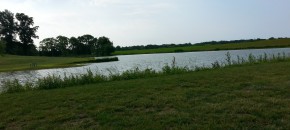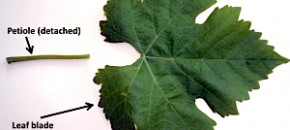Potato Black Leg – Black leg is caused by Erwinia spp. which also cause ‘soft rots’. The bacteria which lead to the aerial phase of Blackleg are soil-borne (originate from old crop debris) and spread by rainfall, overhead irrigation and wind. The aerial phase of Blackleg does not originate from decaying seed pieces. The bacterium […]
Continue reading...Vegetable Diseases of the Week – 6/14/15
Vegetable Disease Briefs 6-14-15
Basil downy mildew has been reported in New Jersey. All growers should be scouting on a regular basis and applying protectant fungicides. Late blight was reported on potato in northern North Carolina near the Virginia border on this past week. There have been no reports of late blight in the region to date. To track late blight in […]
Continue reading...Audit Ready: 10 Tips to Help You Prepare

1. Auditors will most likely look at aerial maps of the farm prior to their visit. They may ask about water sources, buildings etc. that they see on the online map that you might not have included in your production area maps. Take a look at your farm on google maps to make sure you […]
Continue reading...Vineyard Nutrition Monitoring

from NJ Center for Wine Research & Education Bloom is here and it is a great time to get an accurate assessment of the nutritional status of your grapevines. Monitoring Grapevine Nutritional Status What to sample? Soil or leaf petioles. Soil sampling should be performed before planting and every 3 years, primarily to track the […]
Continue reading...Potato | Tomato Disease Forecast 6-12-15
Click to View | Download Report 6-12-15 Potato Disease Forecasting Report We will be tracking DSVs for Late blight development and calculating P-days for initiating the first early blight fungicide application. The first late blight fungicide application is recommended once 18 DSVs accumulate from green row. Green row typically occurs around the first week in May […]
Continue reading...